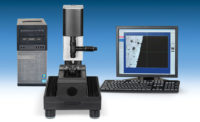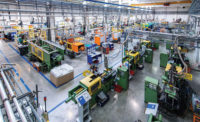PHILADELPHIA - The region’s manufacturing sector is continuing to show signs of recovery, according to firms polled for this month’s Federal Reserve Bank of Philadelphia Business Outlook Survey. Indexes for general activity, new orders, and shipments all registered positive readings for the third consecutive month, but they suggest only marginal growth. Indexes for employment and work hours remained negative, but trends suggest that employment losses have moderated in recent months. A growing percentage of firms have indicated higher input prices in recent months, but price increases for their own manufactured goods are not prevalent. The region’s manufacturing executives expect business activity to increase over the next six months; however, expectations have moderated somewhat in the last several months.
The survey’s broadest measure of manufacturing conditions, the diffusion index of current activity, fell from a reading of 14.1 in September to 11.5 this month. The index has now remained positive for three consecutive months following a nearly continuous string of negative readings since the beginning of the recession in December 2007. The percentage of firms reporting increases in activity this month (28%) exceeded the percentage reporting decreases (17%). Other broad indicators suggest some growth this month. The current new orders index also remained positive for the third consecutive month and increased three points. The current shipments index decreased five points but remained slightly positive. Firms reported declines in inventories this month: The current inventory index declined 14 points, from -18.1 in September to -31.8 this month. Indicators for unfilled orders and delivery times remained negative, suggesting continued weakness.
Labor market conditions remain weak, although there are signs that widespread declines have moderated considerably. The current employment index, although still negative, increased eight points, from -14.3 to -6.8, its highest reading since September 2008. Twenty-three percent of firms reported employment declines, while 16% reported employment increases. The workweek index remained negative, edging one point lower, to -4.7.
Although more firms have reported higher prices for purchased inputs over the past few months, firms continued reporting overall declines in prices of their manufactured goods this month. The prices paid index has been indicating higher input prices for the past three months, increasing 25 points since July. The same manufacturers, however, reported declines in prices for their own manufactured goods for the 12th consecutive month. The prices received index, however, increased six points, to -4.3.
The future general activity index remained positive for the 10th consecutive month but decreased from 47. 8 in September to 39.8, its lowest reading since April. Despite losing ground in recent months, indicators of future activity remain near levels not seen since 2004. Indexes for future new orders and shipments declined this month, falling 10 points and 17 points, respectively. For the sixth consecutive month, the percentage of firms expecting employment to increase over the next six months exceeded the percentage expecting declines (26% vs. 19%). But just as the other broad future indicators have fallen, the future employment index fell 13 points.
In special questions this month firms were asked about their plans for capital spending over the next six to 12 months. More than 35% of the firms indicated that they had revised their planned spending downward due to changing financial conditions; 14% indicated they had revised plans upward. The percentage of firms expecting to decrease their capital spending over the next six to 12 months narrowly exceeded the percentage expecting to increase spending. The most frequently cited reason for not increasing capital spending was low expected sales growth , a low rate of current capital utilization, and limited need to replace information technology equipment.
According to respondents to the October Business Outlook Survey, manufacturing conditions are improving marginally. For the third consecutive month, the survey’s indicators for general activity, new orders, and shipments were positive, suggesting some positive growth. Employment continued to decline among the reporting firms, although the pace of decline was slower. Firms still expect conditions to improve over the next six months, but future indicators suggest that optimism has waned somewhat in recent months.
For more information, visitwww.phil.frb.org.
Get our new eMagazine delivered to your inbox every month.
Stay in the know with Quality’s comprehensive coverage of the manufacturing and metrology industries.
SIGN UP TODAY!Copyright ©2024. All Rights Reserved BNP Media.
Design, CMS, Hosting & Web Development :: ePublishing


